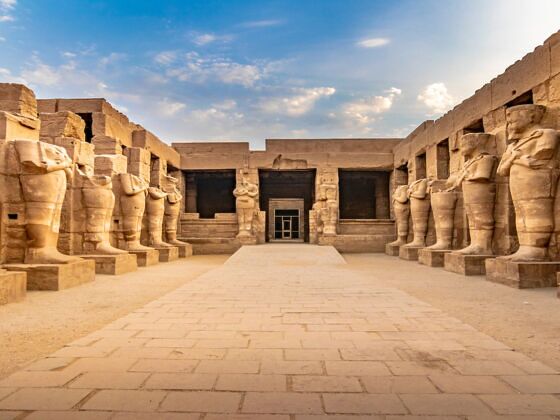In the heart of Egypt lies a magnificent, sprawling temple complex that dates back millennia. Known as Karnak Temple, this ancient site has been an important part of Egyptian culture and religion for centuries. Built over the course of hundreds of years, with construction beginning around 2055 B.C., the temple was dedicated to Amun-Ra, the god of air, sun, and fertility. It grew in size and complexity over time, eventually becoming one of the largest religious structures in all of Egypt. In addition to its many shrines and statues, it also contains two large obelisks and a giant avenue lined with sphinxes, and covers an area of around 200 acres.


This Temple in Egypt With 134 Huge Columns Is One of the Largest in the World
@matadornetwork #KarnakTemple in #Egypt is one of the largest temple complexes in the world 🇪🇬 🎥 @Yanis Terzis #ancientruins #karnak #egypttravel ♬ original sound – Sickickmusic
The main attraction at Karnak Temple is its massive Hypostyle Hall—a hall filled with 134 towering columns that reach up to 70 feet high, arranged in 16 rows. This incredible space is decorated with intricate carvings depicting scenes from daily life and symbols from ancient Egyptian mythology. Other highlights include awe-inspiring statues like the Great Sphinx and carved reliefs depicting various gods and goddesses. You can also explore smaller side chapels containing offerings to different gods or visit one of several royal tombs located within the complex. There’s also the Sacred Lake — a large pool dedicated to Amun-Ra — several smaller temples dedicated to other gods and royalty, two obelisks that were constructed by Queen Hatshepsut and her daughter Neferure, and many hieroglyphic inscriptions that tell stories about life in Ancient Egypt.
If you’re visiting Karnak Temple then you should also take some time to explore some other nearby attractions such as Luxor Temple and Medinet Habu—an ancient burial site located across the Nile River from Karnak. Luxor Temple is another spectacular site that offers visitors a glimpse into Ancient Egypt’s grandeur while Medinet Habu offers an insight into funerary rites practiced thousands of years ago.